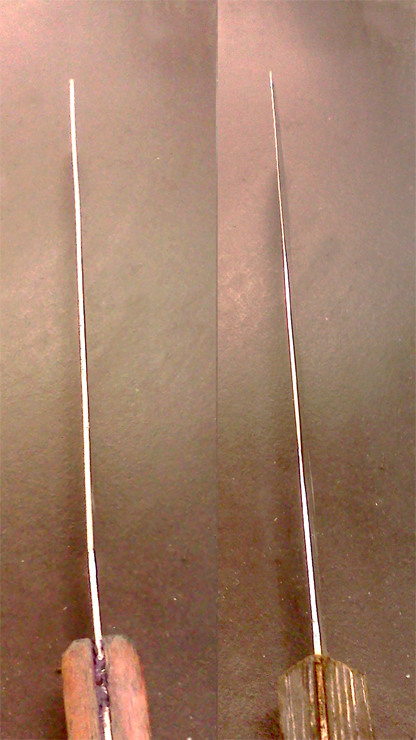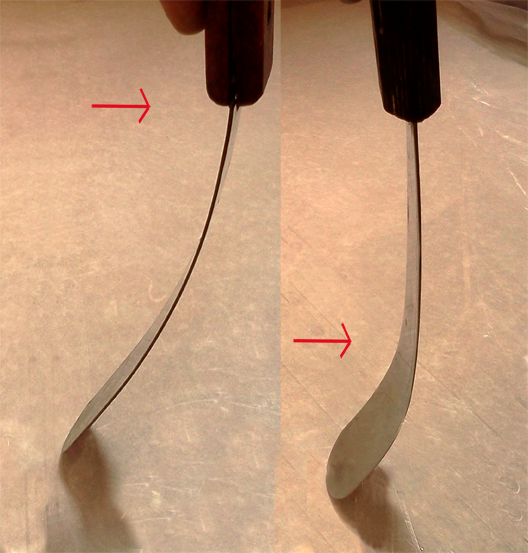Top 5 Considerations for Ink Knives and Spatulas
December 18, 2012

In continuing with our "Top 5" series relating to various screen printing topics, here is Kieth Stevens with the next installment: Top 5 Considerations for Ink Kives and Spatulas. This article was recently published in Impressions:
When working with screen printing ink, it’s important to use the right tools for the job.
It’s true, there are many varieties of ink knives and spatulas on the market — cheap ones and more expensive ones, those with plastic and metal blades, long and short, etc. The choices are dizzying and every printer has a “favorite.” One of the main determining factors in choosing the right knife is the purpose for which it will be used. Here are several things to consider when choosing an ink knife:
• Material: Ink knives usually are made from plastic or metal (stainless steel), with the ubiquitous cardboard squares rounding out the choices. The plastic ones usually are fairly rigid and work well for scooping inks, whereas the metal ones can have more flexibility. Needless to say, the cardboard squares are the least durable, but often convenient since they are cheap and can be thrown away.
• Shape and Length: Knives come in various shapes and sizes, from long flexible ones to short wide ones, with rounded or straight edges. Typically, the short wide ones (usually shaped like putty knives) are used for loading and unloading ink from the bucket onto the screen or scraping the sides of the bucket. Take care not to touch the screen with these knives, as their sharp edges could tear or damage it. The longer, more flexible metal knives are great for mixing and spreading ink onto the screen. When purchasing a long mixing knife, be sure to get one with a length suitable for the size of the container in which you are mixing ink.
• Blades: As mentioned, the long flexible knives with the rounded edges are great for mixing inks, but be sure to look at the blade from the side as well. If it is the same thickness throughout — from the handle to the tip — the knife will not be as flexible and can break near the handle while in use. A good mixing blade tapers nicely (thicker to thinner) from the handle to the tip of the blade. Invest in good, quality knives. One customer told me that he uses a cake frosting knife for mixing, but I strongly suggested that he switch, since those cake frosting knives can snap when used for mixing textile plastisol inks due to their high viscosity.
• Handles: Generally, the metal knives have wooden or resin-type handles. Many of the plastic variety also have hooks molded into the handles, which attach nicely to the rim of the buckets. This keeps the knives within easy reach when needed and prevents them from slipping into the bucket.
• Utility: Here are some pointers on the knives I prefer for various tasks. Again, I use a knife with a long, rounded, tapered metal blade for mixing inks and spreading them onto the screen. Generally, I like using the plastic putty knife-type ones for scooping ink. I also occasionally use cardboard for spreading or scooping ink. However, when using cardboard, only use it sparingly with plastisol ink. Never leave cardboard squares sitting in plastisol ink buckets, as the cardboard will absorb the plasticizer and can affect the properties of the ink. Also, never use it with water-based ink.

You can purchase and use cheaper plastic knives when scooping inks, but I highly recommend investing in a couple of good mixing knives that will last a long time. In my experience, whenever I’ve come across ink specialists at any production shop, they have invested in quality tools and seldom lose sight of their favorite knives.
Kieth Stevens is the Western regional sales manager for International Coatings. He has been teaching screen printing for more than 10 years and is a regular contributor to International Coatings’ blogs. For more ink tips and information, visit iccink.com and read the company’s blog at internationalcoatingsblog.com.
International Coatings manufactures a complete line of phthalate-compliant screen printing inks, including a wide variety of whites, specialty inks, special effects inks, color matching systems, additives and reducers. For more information on our products, please visit our website at www.iccink.com.
 International Coatings: The Intelligent Choice
International Coatings: The Intelligent Choice


